Background
First, the biggest question in any Oath of the Gatewatch deck is whether or not it cares about colorless mana. They fall into three camps: zero, sporadic, and recurring. The zero is your normal two color (or splash) deck. Sporadic has cards that benefit from threat of activation or maybe a single high end card (like a splash). Sample cards include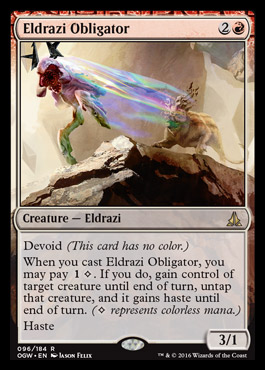
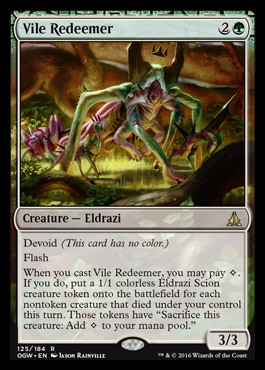
These cards totally work without having dedicated colorless mana, but there's a sweet upside (hopefully at a higher curve) that rewards having colorless. Contrast to the following:
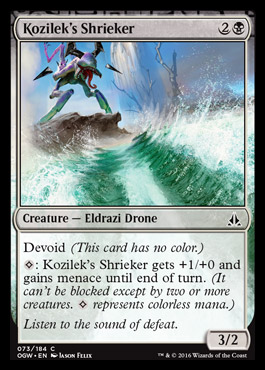
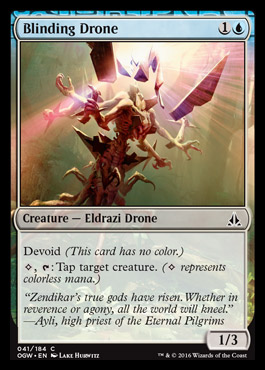
These little bastards really want a recurring source of colorless mana, namely land. You don't want to have a single Scion sacrificing itself to tap a creature, that's not a good payout. For these decks colorless almost plays more of a third color rather than a splash.
Fortunately we're making it easy on ourselves: white, being the goody two-shoes that it is, gives zero fucks about colorless mana (outside of one random rare; what the hell Eldrazi Displacer?) and so decks paired with it generally share its prejudices.
Often what I like to do here is look at the gold cards to see if there is a hint as to what mechanic Wizards is pushing.
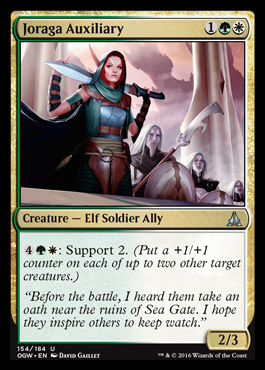
Hmmm, I hate it when it's so cryptic. Of the nine non-rare "Support" cards in Oath with Support, seven of them are green or white. Also a fun note: Oath is defined by the preponderance of 2/3 creatures (there are 5.) Compare this to the 2/2 distribution (Six, four of them green or white). So in a perfectly pure world, green/white wants to curve out and Support its creatures over the 2/3 defense.
This is my first in what I hope is a series of color pairing analysis. I want to talk about how you would get pulled in, what goes up in value for you. I don't want to talk about each card, all of the basics still hold true (removal is good, equipment is bad, combat tricks aren't to be overvalued) Most commonly you'll be pulled into the colors from the universally awesome cards.
Green/White Support
As mentioned above, the green/white deck wants to hit a 2-3-4 curve out, hitting a support booster on either turn four or five. Like all aggro decks, making sure you have quality early drops that keep the pressure on is key.
Pulled In (aka the build-around-me)
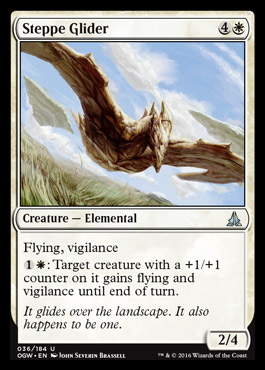

Support Enablers
Often your high end will be assuming an existing board that can benefit from your Support triggers. You'll probably want 5-6 of these cards. Nissa's Judgment is legit: expensive but pretty unconditional removal with the support built in. The Saddleback is also a little better than it looks PROVIDED you have two targets for it. Curving out into it does feel good.
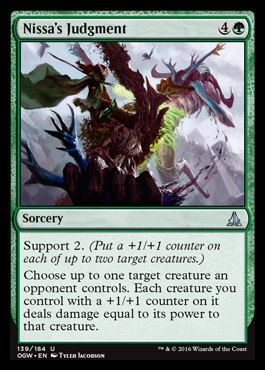
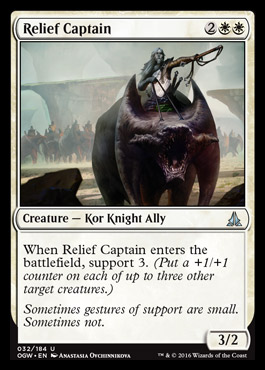
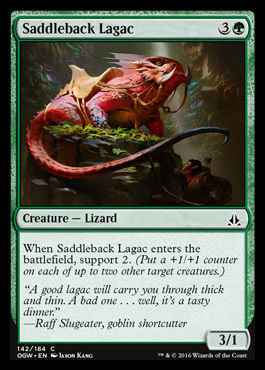
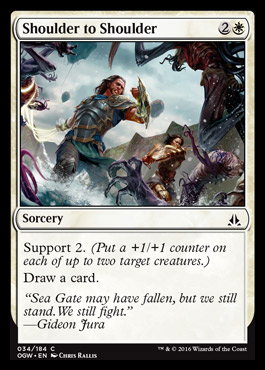
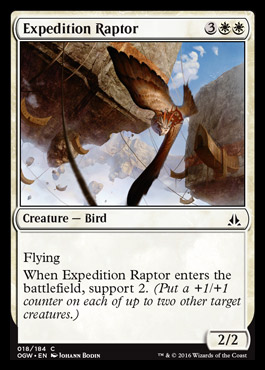
Two Drops
If anything, the biggest weakness of this deck will be the quality of its two drops. This is not terribly inspiring list. The Baloth Pup, even with +1/+1 is still almost certain to trade early. The Makindi Aeronaut needs a +1/+1 just to be relevant and the War Cleric and Drone are just bears with irrelevant upside.
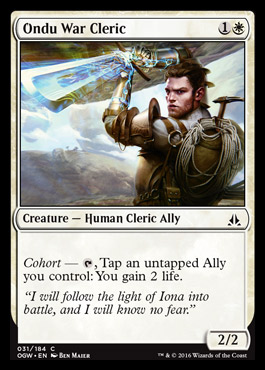
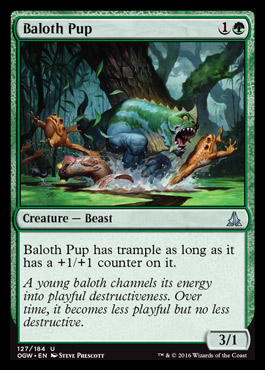
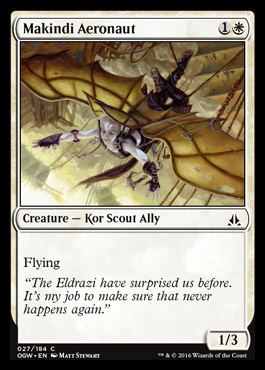
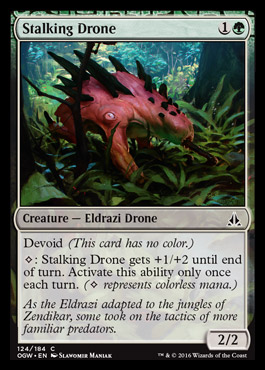
Three Drop
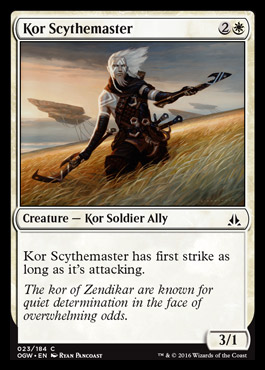
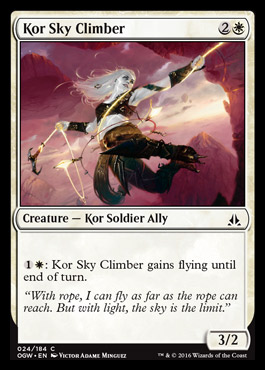
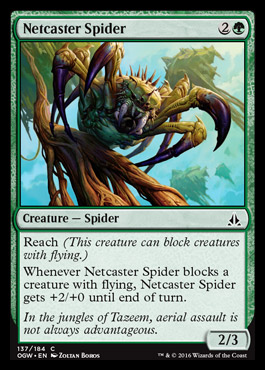
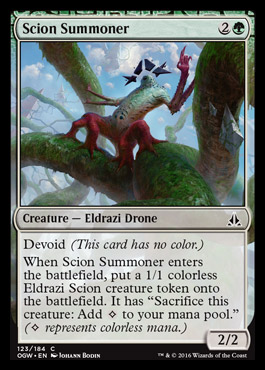
BFZ Priorities
With only one pack of BFZ, uncommons are equivalent to rare and the commons are more like an uncommon. So I'm only going to list commons. Obviously if you see a Kor Bladewhirl, snap that shit up. But you certainly can't count on it. Aside from getting lucky, the best use for BFZ might be to fill in holes in the 2-drop slot.
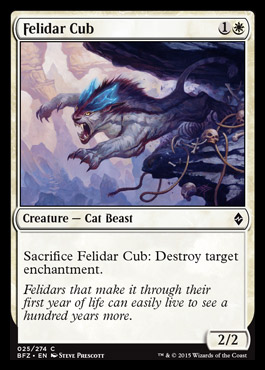
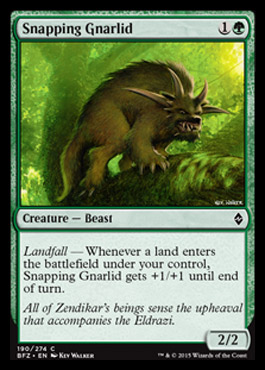
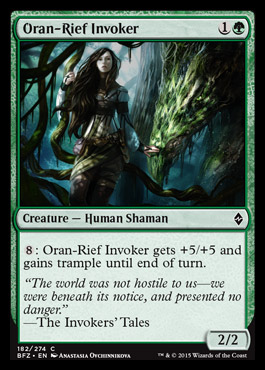
Also nice for a 'go wide' strategy
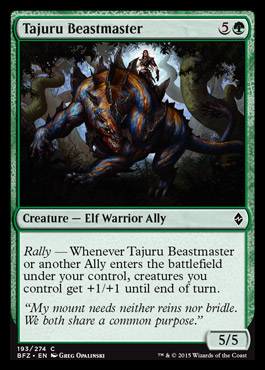
Also, possibly a speculative buy, the Broodhunter Wurm is going to be more relevant in Oath. Less huge creatures, more stalled boards gummed up by 2/2s and 2/3s. Worth keeping an eye on.
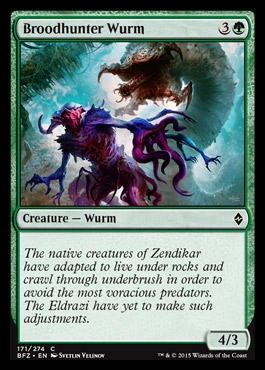
No comments:
Post a Comment